Partner Series: Get to Know Cows & Fish’s Riparian Specialist, Tonya Lwiwski
Written by Heather J. Marshall
Tonya Lwiwski was raised in Winnipeg, but says her heart “belongs in rural areas”. Spending time out on the farm with cousins fostered an early interest in the natural world. Later, when Lwiwski began her studies at the University of Manitoba, she was “inexplicably taken” with a plant anatomy course, which led to more botany courses. She says, “Once I took a taxonomy course that included a large component of plant ID, I was hooked!”
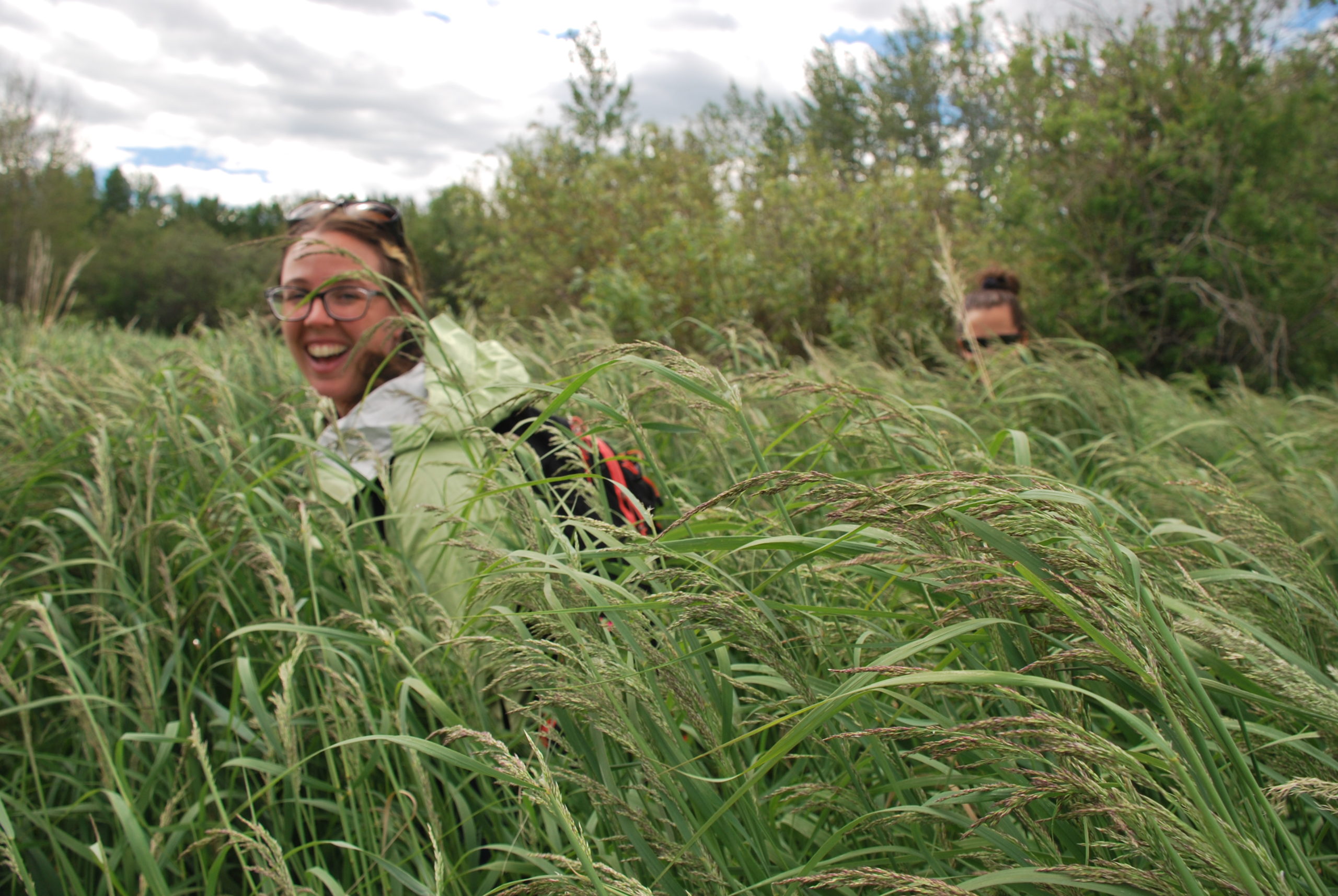
Tonya Lwiwski walking through tall marsh reed grass. Photo credit: Kerri O’Shaughnessy.
After completing her BSc in Ecology with a botany focus, Lwiwski joined a large-scale study at Grasslands National Park for her Master’s work. The long-term pasture project looked at how different grazing intensities were affecting various ecological components, including plant communities, over time. The summers in southern Saskatchewan were memorable, with a unique community of students from all over the continent . That is where Lwiwski really honed her plant ID skills — and fell in love with Grassland grasses.
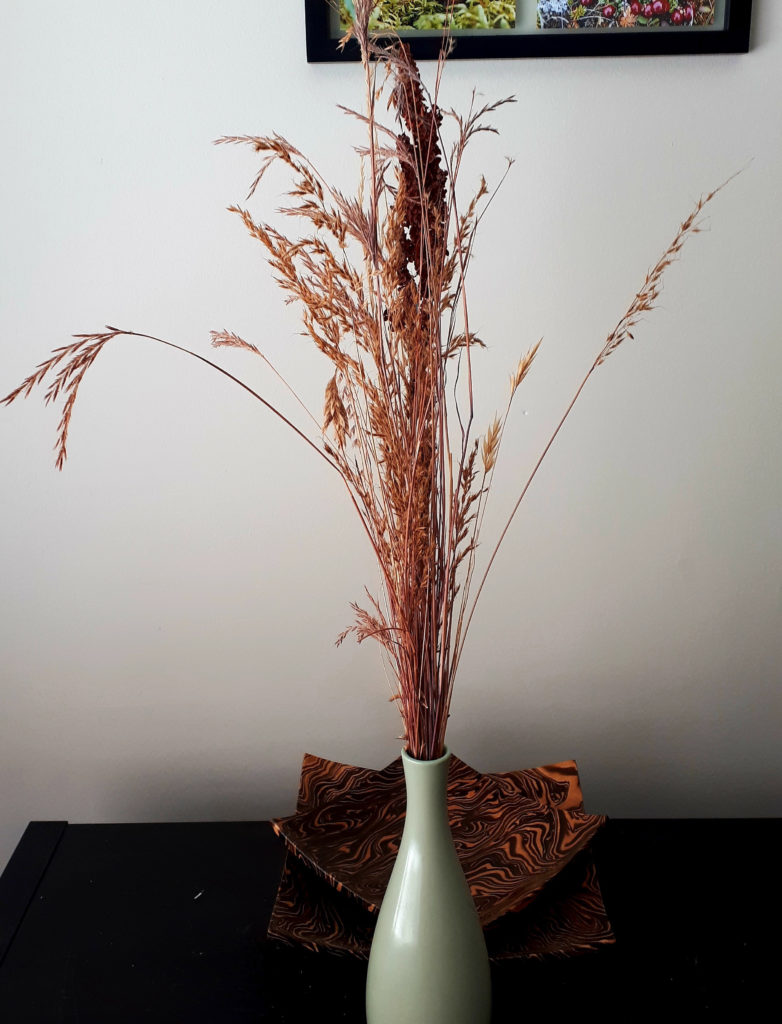
Right: A bouquet of various grasses Lwiwski has collected in her travels. Mainly tallgrass prairie species from Manitoba: big bluestem, little bluestem, indiangrass, etc. Photo credit: Tonya Lwiwski.
Once she graduated in 2013, Lwiwski moved to Edmonton for some contract work as a Wildlife Technician. She liked the people and city, so decided to put down roots in Alberta’s capital. After several years of consulting work in plant, wetland, and bird surveys, Lwiwski joined the Cows and Fish team.
Lwiwski was hired by Cows and Fish in 2018 as a Riparian Specialist. When asked what exactly that involves, she laughs because there are many parts to her job. Most years, she travels throughout the province and gives workshops on riparian areas and beaver management. Cows and Fish are involved in a collaborative project with the Miistakis Institute called “Putting Beavers to Work”, in which they are educating landowners, municipalities, and other watershed users about innovative ways to co-exist with and manage beavers. Currently, this means adapting these various presentations to an online webinar format. Another aspect of work for Lwiwski and other Riparian Specialists is to sit on various boards throughout the province, including some ALUS communities, and advise on riparian-related projects.
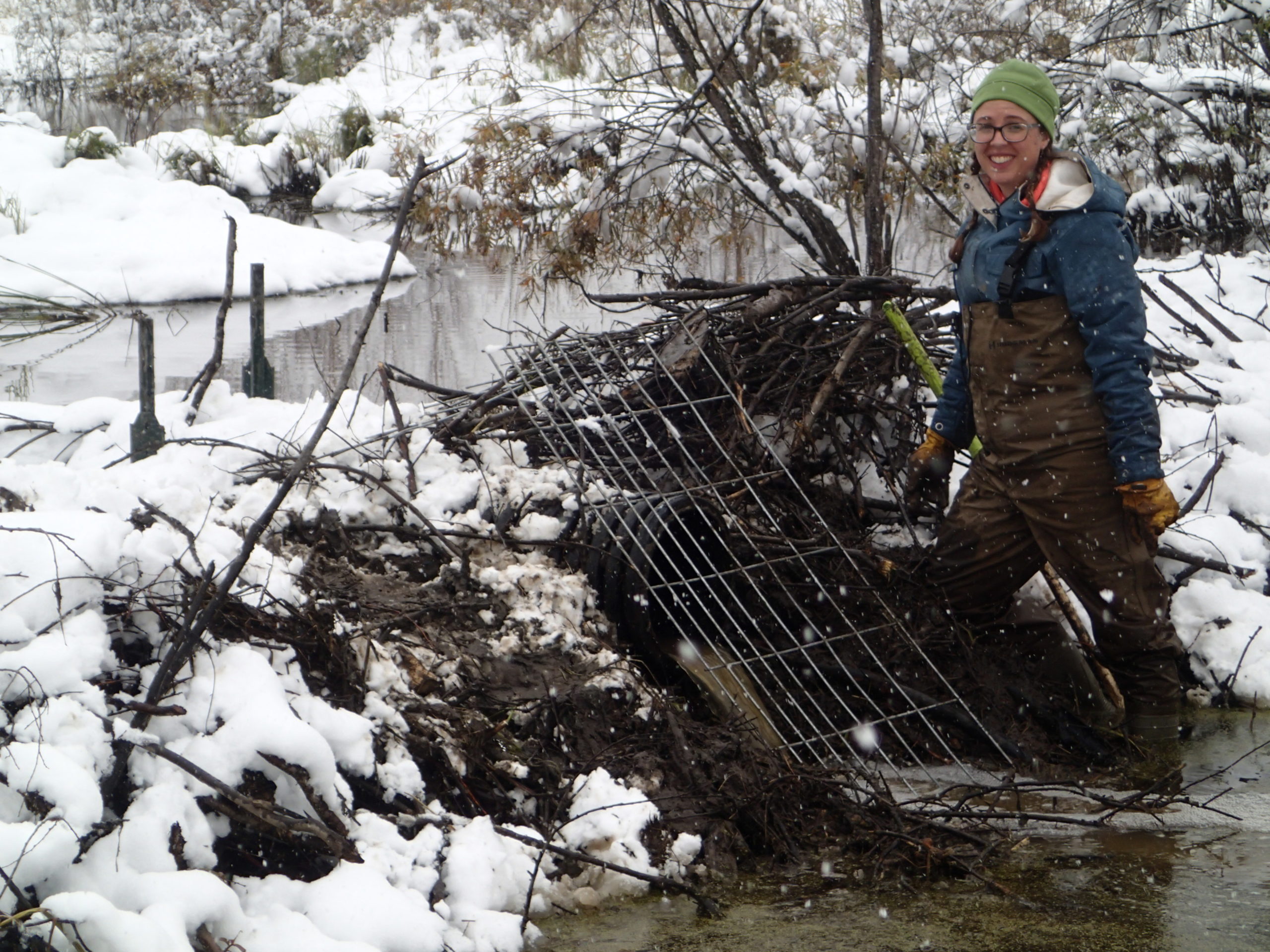
Lwiwski in front of a pond leveler (regulates water levels around beaver dams) that is being repaired on an unexpectedly snowy September day. Photo credit: Kerri O’Shaughnessy.
Because of Lwiwski’s expertise in plants and fieldwork, she also joins the Cows and Fish field crew in the early part of their season. This allows her to mentor new staff in the specifics of Riparian Inventories. These inventories give landowners a benchmark score of how healthy their riparian areas are by looking at the plants, as well as some physical characteristics of the riparian area in question. From there, Cows and Fish give suggestions on what could be done to improve them. Each inventory takes a half day (in decent weather), which means a full season for field staff, as Cows and Fish does between 150-200 of these onsite inventories for landowners across the province each year.
In 2015, Cows and Fish worked with the VRWA to get funding and engage with landowners in the Vermilion River watershed. Once the funding was in place, the VRWA and various partners worked on 35 different riparian improvement projects (VRWREP) throughout the watershed. After most of the projects were done, Cows and Fish was hired to do more extensive Riparian Health Inventories of some of the landowner project areas. This gave landowners a baseline for their riparian area and what to look for as the project areas rest and recover.
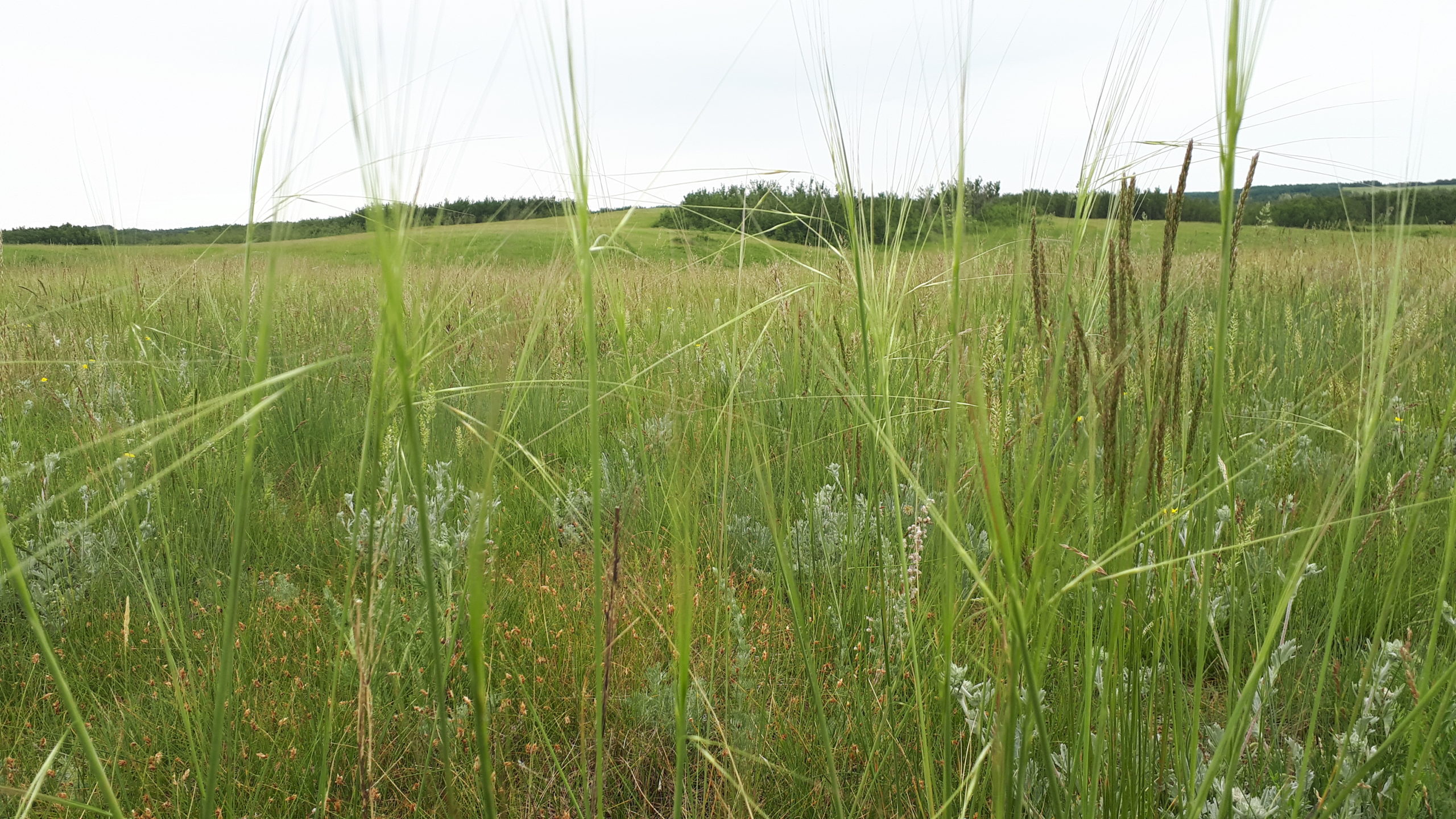
“The best way for riparian areas to heal is to just leave them alone.”
A rare sighting in the Vermilion River watershed: Lwiwski was pleased to find a piece of wonderful native fescue prairie on her way out to assess a site near the Vermilion River. The grasses are needlegrasses , with June grass in the back right. Photo credit: Tonya Lwiwski.
Lwiwski talks about how minimizing the impact can really change the landscape — and water — for the better. Whether an area is being tilled, driven through, or cattle are spending too much time there, once a fence is in place to remove or reduce the impact, Lwiwski says, “the best way for riparian areas to heal is to just leave them alone.” She adds that if there are no shrubs nearby, a landowner might consider willow staking (willow cuttings driven into the ground), but mostly, plants will move back into an area or revegetate on their own.
As for the best parts of her job, Lwiwski is quick to reply, “I will always get excited for plants. Even if it’s the same plants I see every year, the first one that I come across each year, I get very excited.” She also enjoys teaching people about plants and highlights the plant ID field days they do throughout the summer with partner organization and landowners as particularly gratifying. She observed the transition field assistants went through when she was in grad school, as they often complained about having to learn about plants. They were more interested in learning to identify birds and grumbled that plants were “so boring, they don’t move.” But by the end of the summer, Lwiwski said they had a different perspective: “Once you know what you’re hiking through, it takes on a whole new meaning. I like seeing that transformation.”
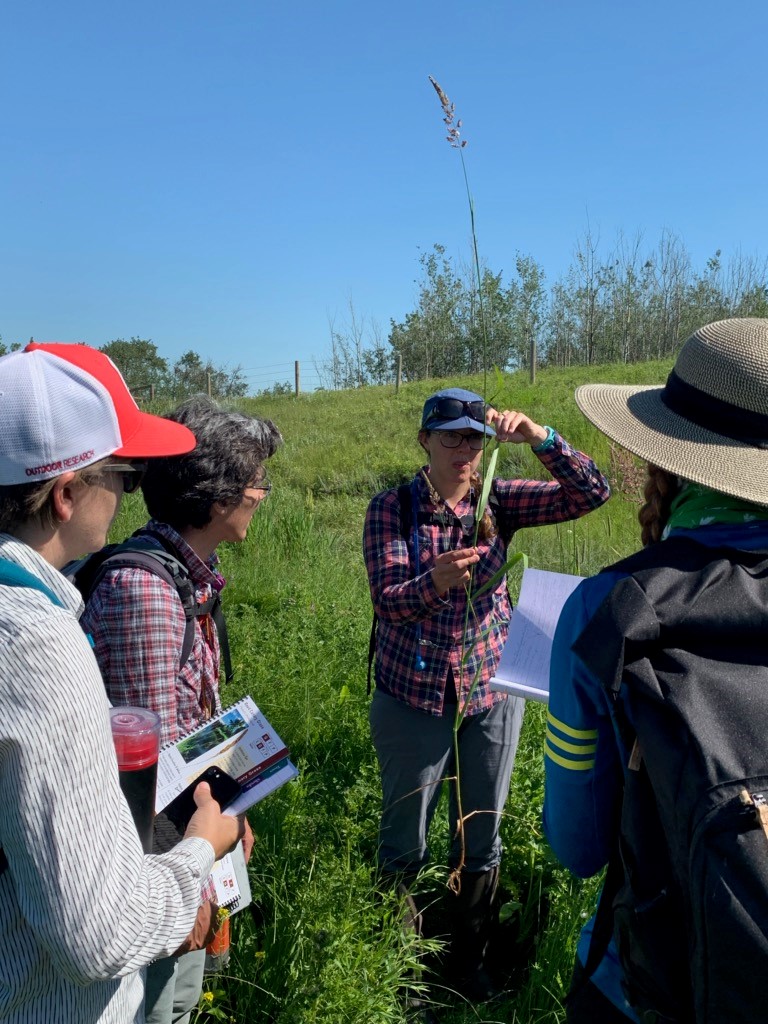
“I would say that I have nothing on them [landowners] in terms of knowledge about their riparian areas and their observations of how things have gone over the years. It’s a very different way of looking at things, compared to my scientific background.”
At a 2019 plant ID session, Lwiwski shows attendees the characteristics of reed canary grass. Photo credit: Carolyn Ross.
Lwiwski also appreciates speaking with landowners because of their specific and local knowledge of the land. As someone who doesn’t come from an agricultural background, Lwiwski values “learning from the landowners, their ways that they’ve made things work, some of their new and interesting ideas of how they want things to be going… it’s fascinating.” The best way to glean some of this information is to get landowners out on the land and get them talking as she walks around with them. That’s where she gleans nuggets and insights they’ve carried through years of interaction with their land. Admiringly, she adds, “I would say that I have nothing on them in terms of knowledge about their riparian areas and their observations of how things have gone over the years. It’s a very different way of looking at things, compared to my scientific background.”
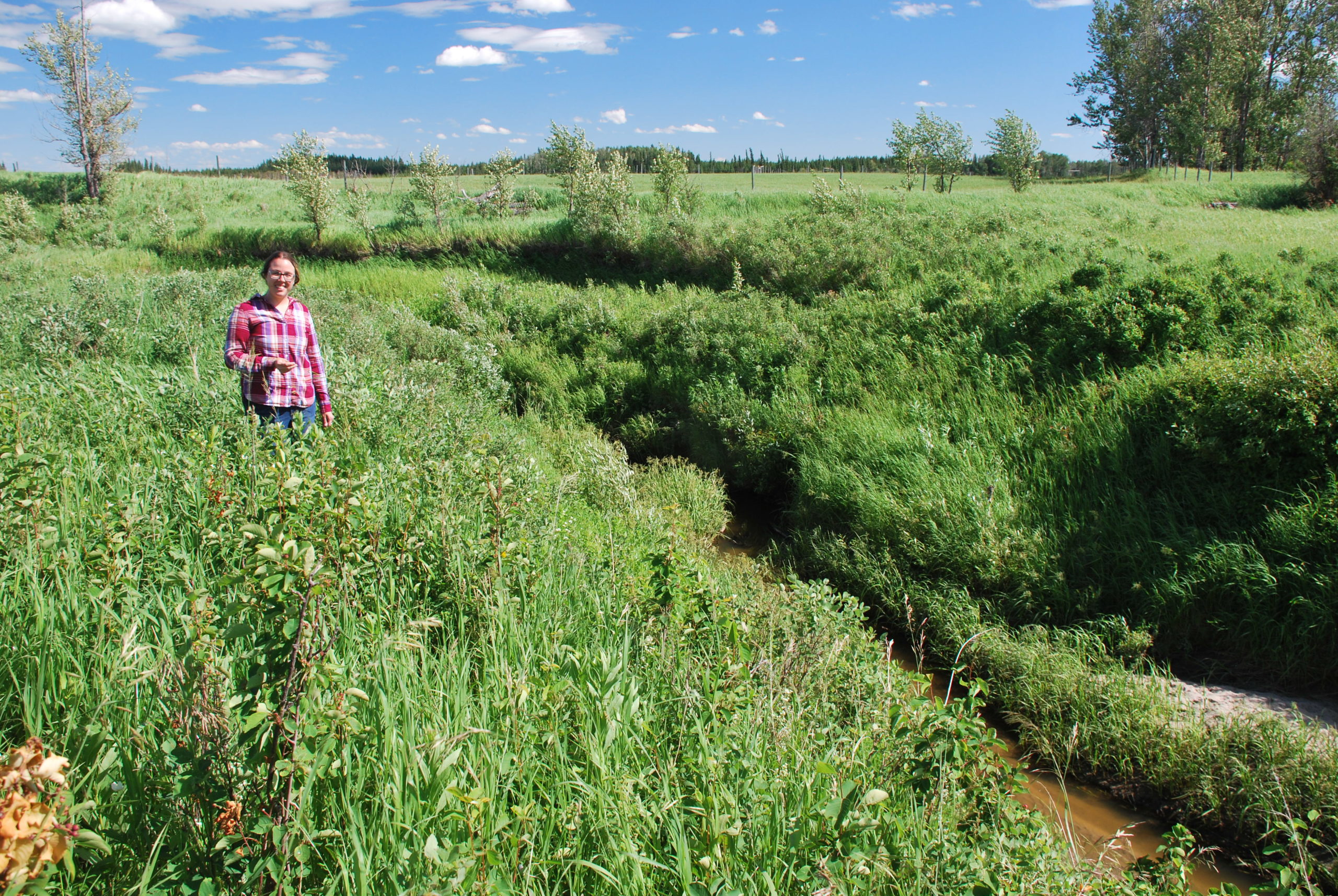
Lwiwski standing in a riparian area during a field assessment. Photo credit: Kerri O’Shaughnessy.
For more information about Cows and Fish or what you can do to encourage riparian health, please go to www.cowsandfish.org.
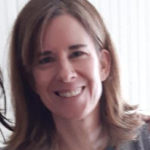
Heather J. Marshall is a freelance writer and graphic designer. Her main interests are local food and history, human connection to the environment, and biographical stories. To contact Heather, please go to: hmmcreate.myportfolio.com
